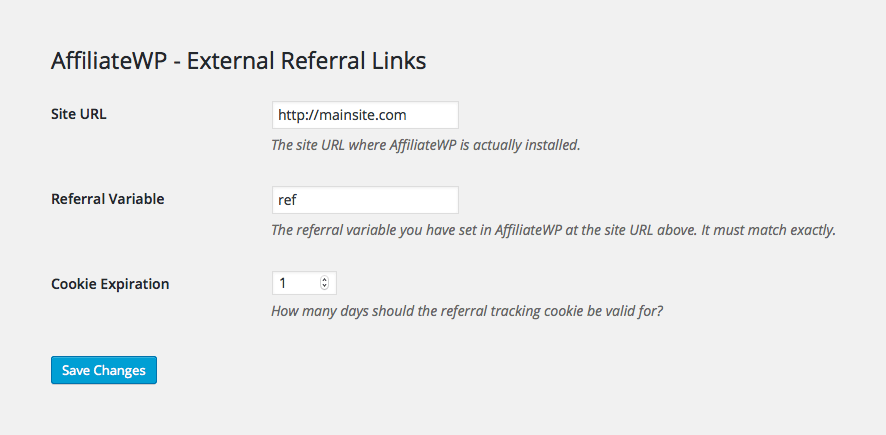External Referral Links
Allows affiliates to promote external WordPress-based pages
Are you using AffiliateWP but have another WordPress-based site you would like affiliates to promote? If so, then this free add-on is for you.
Let’s say you have 2 websites, SiteA.com and SiteB.com:
SiteA.com
This is where AffiliateWP and your chosen eCommerce/membership system is already installed.
SiteB.com
This is where you will install the External Referral Links add-on on a completely separate website with its own installation of WordPress. It has been set up to promote your products and/or services on SiteA.com and purely acts as a marketing site.
You tell your affiliates to promote SiteB.com and they go ahead and share their referral link, which will typically look like one of the following:
- http://siteb.com/?ref=123
- http://siteb.com/?ref=john
Note: External Referral Links only works with non-pretty affiliate links. Also, a visit entry will not be created for the external site link, only when the outbound link is clicked to return to the main site where AffiliateWP is installed.
A customer clicks on the affiliate’s referral link and arrives on siteB.com. They are absolutely thrilled with what they see and click one of your various “call to action” buttons or links. After arriving on SiteA.com the customer makes a purchase, you receive a sale, and everyone is happy… or are they?
The affiliate who originally referred the customer did not receive a commission on the sale – why is that?
This is simply because AffiliateWP is installed on Site A, not Site B. When the customer clicked on the link the affiliate shared, nothing happened. There was no code on site B that interpreted the affiliate’s ID or username in the URL.
You might think that installing AffiliateWP and your eCommerce or membership system on Site B would solve this problem. Since they are separate sites, they have separate databases, which means separate data. In no way are the two site’s data shared.
So how can affiliates promote site B but earn a commission on site A when the customer purchases? The answer is fairly simple. By collecting the affiliate’s ID or username from the URL (including the referral variable) and passing it to any links within the site that link to site A.
This is exactly what External Referral Links does. It will take the affiliate’s ID or username from the URL and store it as a cookie in the customer’s browser. Any link on site B that links to site A will then have the affiliate ID or username intact.
Since a cookie is used, the customer can freely move between pages on site B and it will still link correctly. You can also set the cookie’s expiry; if the customer leaves the site and comes back later, it will remember which affiliate referred them.


